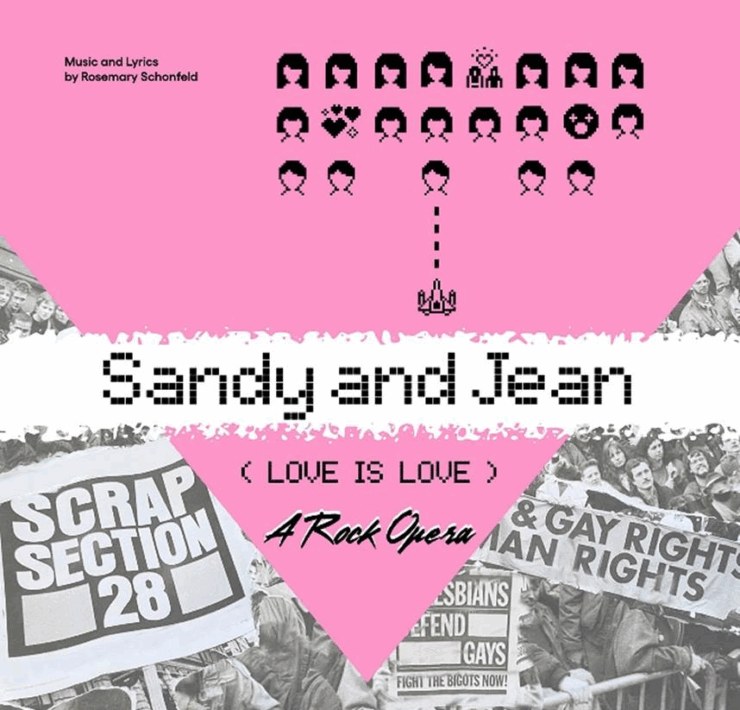OFM Mods: An Abridged History of Earrings on Men and Queerness

Keegan (they/them) is a journalist/artist based in Los Angeles.
Body modification in 2021 is hard to miss day-to-day. CEOs and professionals in all industries have full tattoo sleeves and facial piercings that would rarely be seen 30 years ago and are now commonplace.
It’s hard to believe simply a man with an earring was ever taboo, but especially for millennials, especially those of us raised as boys, hearing the problematic “left is right, and right as wrong” mantra, it’s not as distant a conversation as we might think.
Most people understand that body modification is not new; it’s been around for thousands of years, and its origins around telling stories about a person’s life, culture, and identity often mirror the reasons people embrace it today.
Even an earring, a single earlobe piercing, has a story and history.
I mean, history, like, thousands of years ago. The oldest mummified body from about 5,300 years ago demonstrated evidence of ear piercings, with archaeologist Howard Carter writing in his description that the Pharaoh’s earlobes were “perforated;” though no earrings were in the mummy wrappings, they were in the tomb.
References to earrings are even older and can be found on clay tablets of Assyria and the papyrus of ancient Egypt, and men’s earrings often showed that person’s higher social status.
Men have adorned themselves with earrings throughout history, and for a multitude of reasons. Just like tattooing, scarification, and other body modifications indicative of age, status, or wealth, the use of earrings on men shifted and evolved in meaning.
In the Middle Ages, the prominent Catholic Church forbade ear piercing completely in that it was altering the body created in God’s image. Pirates, thieves, and people of lower class began to embrace the look in a sort of norm-defying middle finger to society.
Flashing forward a bit, sailors in the early 20th century would often pierce their ears based on superstition. If their bodies were recovered after a sailing accident, the story was that an earring could pay for a proper burial. It was also said to represent a sailor who had traveled the world or survived a sinking.
So, how did earrings and queer men become linked?
Along with subtleties like “hanky codes” to discretely communication queerness to others, it was as early as the 1950s and 60s that men began to use earrings and jewelry to identify themselves as gay.
However, the real momentum didn’t pick up until the hippie movement of the 60s and 70s. Like the pirates in the Middle Ages, and in a time of political unrest and cultural shifts, more people embraced fluid sexuality, gender, and identity expression, and ultimately, this time saw more women and men trying out earrings as a rejection of societal norms.
“In a world where you can’t dress flamboyantly, that’s a very discrete signal,” says New Yorker David Menkes for a New York Times piece, “Piercing Fad is Turning Convention on Its Ear,” from 1991.
From the 70s to the 80s, alternative, new-wave, and punk subcultures (scenes which were often queer to some to degree to begin with) embraced earrings and body modification to reject society’s expectations of people and their roles.
By the 90s, following the counterculture scenes and decades of mainstream shifts, piercings were more popular than ever. In big cities, it wasn’t even unusual to see someone with a nose or lip stud.
“We’ve never been busier,” says Dan Kopka, assistant manager of The Gauntlet body piercing studio in West Hollywood, in the same New York Times article. The studio has since closed its doors, but at the time of publication, it had just opened a new location in San Francisco, Owner Jim Ward calls body piercing an “outgrowth of my own sexual exploration and the things that were erotic.”
Though countercultures pushed this trend to the forefront, once it was embraced by the mainstream, with more heterosexual men and everyday Americans trying out earrings came the now infamous phrase, “Left is right, and right is wrong.”
This conversation around the origins of the phrase is ambiguous and inconsistent. As earrings on men hit the mainstream, the warning around getting pierced in the “correct” or “non-gay” way fluctuated, even based on where you were.
In some cities and states, it was “Right is right, and left is gay,” and the regional and historic inconsistency shows the narrative was born from a game of cultural telephone; culture allowed straight, “mainstream” men to dabble in other forms of expression, but only under an arbitrary guideline of perceived masculinity and heterosexuality.
Many queer people would scoff at the phrase to begin with, but even in 2021, men and boys are othered for wearing earrings. Some schools still ban boys from wearing earrings while girls are allowed, and many employers have it written into their dress code policies that male employees are not allowed to don the same earrings non-male employees can without hassle.
Though the evolution of men and earrings historically is a seemingly small detail in the large sea of conversations around body modification, this shows we still have work to do to destroy the arbitrary, often violent and destructive, restraints of the gender binary and heteronormativity.
What's Your Reaction?
Keegan (they/them) is a journalist/artist based in Los Angeles.










